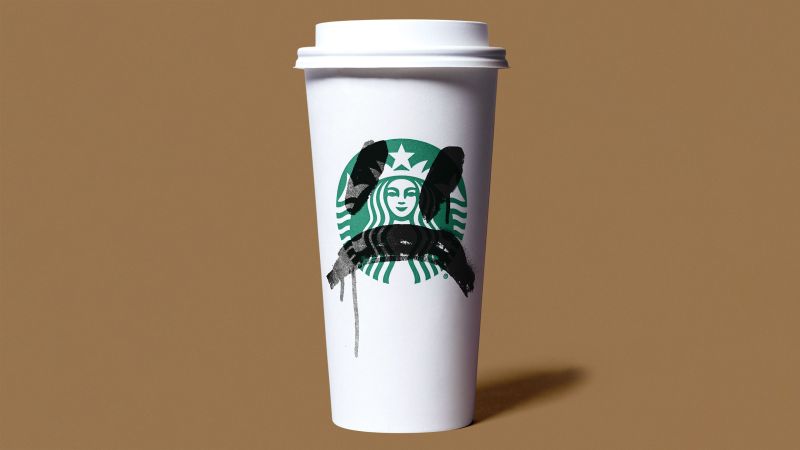Starbucks’s app has made the coffee giant healthier financially, but at a cost to its culture, cafés, and even its brand identity.
In Midtown Manhattan, on the ground floor of an office building, there’s a coffee shop that’s easy to miss. When you walk in, there’s no menu, just a metal riser supporting drinks waiting to be picked up, and in back, some plush banquettes and tables. Display cases are stocked with tidy packs of sushi and sandwiches, and shelves feature gas-station staples like Red Bull and Kettle chips. To access any of this, you pass through a turnstile that scans your palm and logs into your Amazon account. The coffee and food can be paid for without uttering a word to anybody. A sign by the door suggests, “Start with the apps.”
Marketed as “a completely different Starbucks built on effortless convenience” when it opened last November, this store—called Starbucks Pickup with Amazon Go—is the first of three that the coffee company plans to debut in New York. It is also a striking symbol of Starbucks’s quiet brand transformation from warm gathering spot to tech-enabled caffeine depot and of the challenges the company faces today. Starbucks clearly recognizes that it’s at an inflection point: The company announced yesterday that its CEO of five years, Kevin Johnson, is stepping down. (Starbucks’s stock rose 7% on the news.)
In the 1990s, Starbucks began to position itself as “the third place,” a spot between home and work where customers could find comfort, community, and good coffee. The notion had been inspired by longtime CEO Howard Schultz’s visit to Milan’s convivial espresso bars in the late 1980s, and Starbucks has exported the experience widely, operating 34,000 stores in 84 markets. The company built upon this ethos to provide employees with “a welcoming and uplifting third place” as well, one that over the years has included generous policies such as healthcare benefits for part-time employees, a purposefully inclusive workplace, free college tuition, and paid parental leave.
Along the way, Starbucks has gotten gargantuan. It has become the third-largest global restaurant chain, after Subway and McDonald’s, although it’s growing faster than either. The company plans to add 2,000 stores this year, many of them in China, an explosive market—the company’s second largest—where, since 2020, it’s been opening a new store every 15 hours. If you’d invested $10,000 during Starbucks’s initial public offering in 1992, today it would be worth north of $3 million.
At the same time, Starbucks’s relationship with its employees was changing too, brought on by forces both within and outside its control. Asserting that their wages were too low and worker safety was being neglected, baristas in Buffalo started organizing last summer. In the seven months, partners at more than 140 Starbucks stores in 27 states have filed petitions for union votes, making it one of the fastest-moving union drives in U.S. history.
But this isn’t a…



